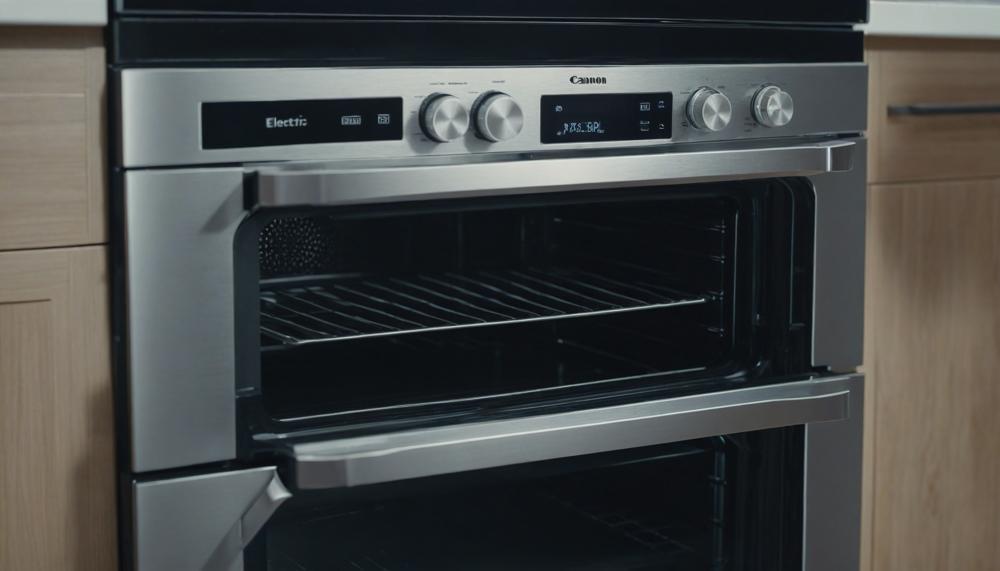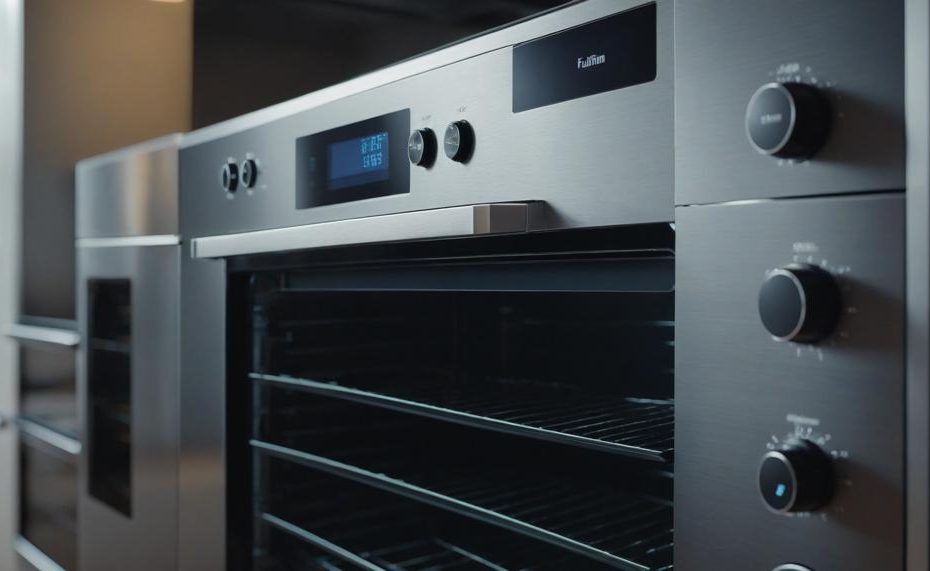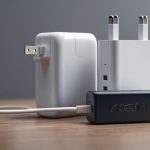When you’re looking to cook up a storm, understanding how many amps your electric oven uses is crucial. Typically, electric ovens use between 15 to 50 amps at 120 volts or 7 to 25 amps at 240 volts. But what does this mean for you? Let’s break it down.
Electric ovens are favored for their quick, even cooking and easier maintenance. Knowing the amperage helps plan your kitchen’s electrical setup and manage energy costs. For instance, a common convection oven with a wattage of 2,000 to 5,000 watts translates to about 12 to 20 amps at 240 volts. Meanwhile, a microwave uses around 5 to 12.5 amps at 120 volts.
Here are the key takeaways:
- Typical Range: Electric ovens use 15-50 amps at 120V or 7-25 amps at 240V.
- Average Oven: Most convection ovens draw 12-20 amps at 240V.
- Microwave Comparison: Uses 5-12.5 amps at 120V.
- Calculation Method: Divide the oven’s wattage by the voltage to find its amperage.
- Energy Consumption: Running an electric oven can cost around $150 annually.
- Circuit Breaker Needs: Ensure the oven’s amps do not exceed 80% of the breaker’s capacity.
Understanding these details not only ensures your kitchen is up to code but also helps you keep tabs on your energy use. Whether you’re an avid home chef or just need to know for your next appliance purchase, this information keeps your cooking experience smooth and safe.
Contents
Energy Consumption of An Oven
To calculate the energy consumption of your electric oven in amps, you can use the formula:
[ \text{Amps} = \frac{\text{Watts}}{\text{Volts}} ]
Here’s a detailed guide to help you:
- Find the Wattage: Look for the wattage on the oven’s label, which is usually found on the back of the appliance or where the power cord exits. Most electric ovens have a wattage between 2,000 to 5,000 watts.
- Determine the Voltage: Electric ovens typically operate on either 120 volts or 240 volts. Check your oven’s manual or label for this information.
- Calculate the Amps: Use the formula above. For example, if your oven uses 3,000 watts and operates at 240 volts, the calculation would be:
[ \text{Amps} = \frac{3000 \text{W}}{240 \text{V}} = 12.5 \text{A} ]
- Check the Amperage Range: To give you an idea, most conventional ovens draw between 15-50 amps at 120V, and 7-25 amps at 240V.
| Wattage (W) | Voltage (V) | Amperage (A) |
| 2,000 | 240 | 8.33 |
| 3,000 | 240 | 12.5 |
| 4,000 | 240 | 16.67 |
| 5,000 | 240 | 20.83 |
Knowing your oven’s amperage is crucial for safe and efficient kitchen planning.
Factors that affect an Oven’s Power Usage
The amount of amps used by an electric oven is influenced by several key factors:
- Cooking Time: Longer cooking times increase the duration the oven draws power, hence using more amps. Shorter cooking times result in lower overall amp usage.
- Temperature: Higher cooking temperatures lead to shorter cooking times but may require the oven to draw more power continuously, potentially increasing amp usage. Conversely, lower temperatures can prolong cooking time, which might result in higher cumulative amp usage.
- Size of the Oven: Larger ovens generally require more power to maintain cooking temperatures, leading to higher amp usage. Smaller ovens are more energy-efficient, drawing fewer amps for the same cooking tasks.
Detailed Explanation
| Factor | Impact on Amp Usage | Explanation |
| Cooking Time | Increases with longer times | Longer cooking times result in the oven being on for more extended periods, thus using more power overall. |
| Temperature | Varies with set temperature | Higher temperatures might reduce cooking time but require more continuous power, potentially increasing amp usage. Lower temperatures extend cooking times, leading to higher overall power consumption. |
| Size of the Oven | Higher for larger ovens | Larger ovens require more energy to maintain the same temperature, resulting in higher amp usage compared to smaller ovens. |
Calculate your Oven’s Electric Consumption
To accurately calculate the electric consumption of your oven, follow these steps:
| Step | Example | Calculation |
| Check Wattage | 2000 watts | |
| Determine Usage Time | 2 hours/day | |
| Daily Consumption | \( \frac{2000 \text{ W} \times 2 \text{ hrs}}{1000} = 4 \text{ kWh/day} \) | |
| Monthly Consumption | \( 4 \text{ kWh/day} \times 30 \text{ days} = 120 \text{ kWh/month} \) | |
| Monthly Cost | \( 120 \text{ kWh} \times £0.20/\text{kWh} = £24 \text{ /month} \) |
Importance of Amps Rating on an Electric Oven
The amps rating of an electric oven is crucial for both its usage and safety. Here’s why:
Significance of Amps Rating
- Ensures Compatibility with Electrical System:
The amps rating indicates the current required for the oven to function properly. Before connecting an oven, ensuring the amps rating matches the household’s electrical system is essential. For instance, a typical household circuit might support 20 to 30 amps, while larger ovens may require 50 to 60 amps.
- Determines Circuit Breaker Size:
The amps rating is vital for selecting the appropriate circuit breaker. A breaker that’s too small could trip frequently, while one that’s too large may not protect the circuit adequately, posing a fire hazard. Proper sizing ensures the circuit can handle the oven’s electrical load without issues.
- Prevents Electrical Overload:
Matching the oven’s amps rating with the electrical supply prevents overloads, which can cause overheating, potential fire hazards, or damage to the oven and wiring.
Impact on Usage and Safety
- Safe Operation:
Correct amps rating ensures the oven operates safely without overloading circuits. This reduces the risk of electrical fires and damage to the appliance and home wiring.
- Optimal Performance:
Ovens with mismatched amps ratings may not heat evenly or perform optimally. Ensuring the right rating means the oven can reach and maintain desired temperatures efficiently.
- Longevity of the Appliance:
Using an oven with the correct amps rating extends its lifespan by avoiding electrical strain and potential component damage.
Average Monthly Cost of Using an Oven
The cost of running an electric oven per month varies based on its wattage, the energy rate, and how often it’s used. Here are some estimates to give you a clearer picture:
| Oven Usage | Wattage | Cost per Month |
| 1 hour per day at highest setting | 2 kW | $8.40 |
| 1 hour per day | 1.5 kW | $6.30 |
| 1 hour of mixed use per day | 1.8 kW | $7.56 |
| Per hour cost | 1.5 kW | $0.21 |
Choosing the Right Circuit Breaker
To determine the appropriate circuit breaker size for an electric oven, follow these steps:
Check the Manufacturer’s Specifications:
Refer to the oven’s manual or nameplate for the recommended circuit breaker size. This information is usually based on the appliance’s wattage, voltage, and amperage requirements.
Calculate the Required Amperage:
Use the formula:
[\text{Amperage} = \frac{\text{Wattage}}{\text{Voltage}}]
Example: For an oven with a wattage of 4800 watts and a voltage of 240 volts:

[\text{Amperage} = \frac{4800}{240} = 20 \text{ amps}]
Apply the 125% Rule:
According to the National Electrical Code (NEC), circuit breakers should be rated for 125% of the continuous load.
Example:
[20 \text{ amps} \times 1.25 = 25 \text{ amps}]
Choose the Correct Breaker Size:
- Breaker sizes typically range from 30 to 60 amps for electric ovens. Select a breaker that matches or exceeds the calculated amperage but adheres to the manufacturer’s recommendations.
- For most household ovens, a 30 or 40 amp breaker is common, but larger or double ovens might require 50 or 60 amps.
Consider Wire Gauge and Type:
- Ensure the wire gauge matches the circuit breaker’s amperage. For example, a 30-amp breaker generally requires #10 copper wire, while a 50-amp breaker may need #6 copper wire.
| Breaker Size (Amps) | Recommended Wire Gauge | Common Uses |
| 30 | #10 Copper | Standard Single Ovens |
| 40 | #8 Copper | Larger Single Ovens |
| 50 | #6 Copper | Double Ovens |
| 60 | #4 Aluminum or #6 Copper | High-Power Ovens |
Verify Compliance with NEC Guidelines:
Ensure the chosen breaker size does not exceed 150% of the oven’s rated current to prevent potential hazards.
Example Calculation:
For a 5000-watt oven at 240 volts:
[\text{Amperage} = \frac{5000}{240} = 20.83 \text{ amps}]
Applying the 125% rule:
[20.83 \times 1.25 = 26.04 \text{ amps}]
Choose a 30-amp breaker and ensure using #10 copper wire.
By following these steps and adhering to guidelines, you can safely determine the appropriate circuit breaker size for your electric oven, ensuring both safety and efficiency.
How to Save Energy on Your Ovens?
There are several straightforward methods to save energy when using an electric oven. Here are some effective tips:
| Preheat Efficiently | Minimise preheating time to 5-7 minutes instead of the typical 10-15 minutes. |
| Use Self-Cleaning Sparingly | Only use the self-cleaning function once every few months. Clean manually using natural cleaning solutions. |
| Choose the Right Cookware | Using the right size cookware and covering pots and pans helps retain heat and reduce cooking times. |
| Maintain Your Oven | Regularly clean to prevent buildup and check the door seal for any gaps that may cause heat loss. |
| Alternative Cooking Methods | Use energy-efficient appliances like slow cookers or pressure cookers for certain recipes. |
| Cook Multiple Dishes | Cook several dishes at once to make the most of the oven’s energy usage. |
| Minimise Door Openings | Avoid frequently opening the oven door to prevent heat loss and longer cooking times. |
Conclusion
Understanding the amperage of an electric oven is pivotal for both safety and efficiency in your kitchen. Electric ovens typically use between 15 to 50 amps at 120 volts or 7 to 25 amps at 240 volts. For the average convection oven, which operates between 2,000 to 5,000 watts, this means a draw of 12 to 20 amps at 240 volts.
Knowing the amperage ensures your kitchen’s electrical system can handle the load, avoiding overloading circuits and potential fire hazards. It also helps you manage energy costs, with typical annual expenses around $150. Calculating the amperage is straightforward: divide the oven’s wattage by its voltage. For instance, a 3,000-watt oven at 240 volts uses 12.5 amps.
Consider factors like cooking time, temperature, and oven size as they influence power usage. Longer cooking times and higher temperatures increase amperage, while larger ovens naturally draw more power. Always ensure your circuit breaker can support the oven’s load, keeping it within 80% of the breaker’s capacity for safety.





